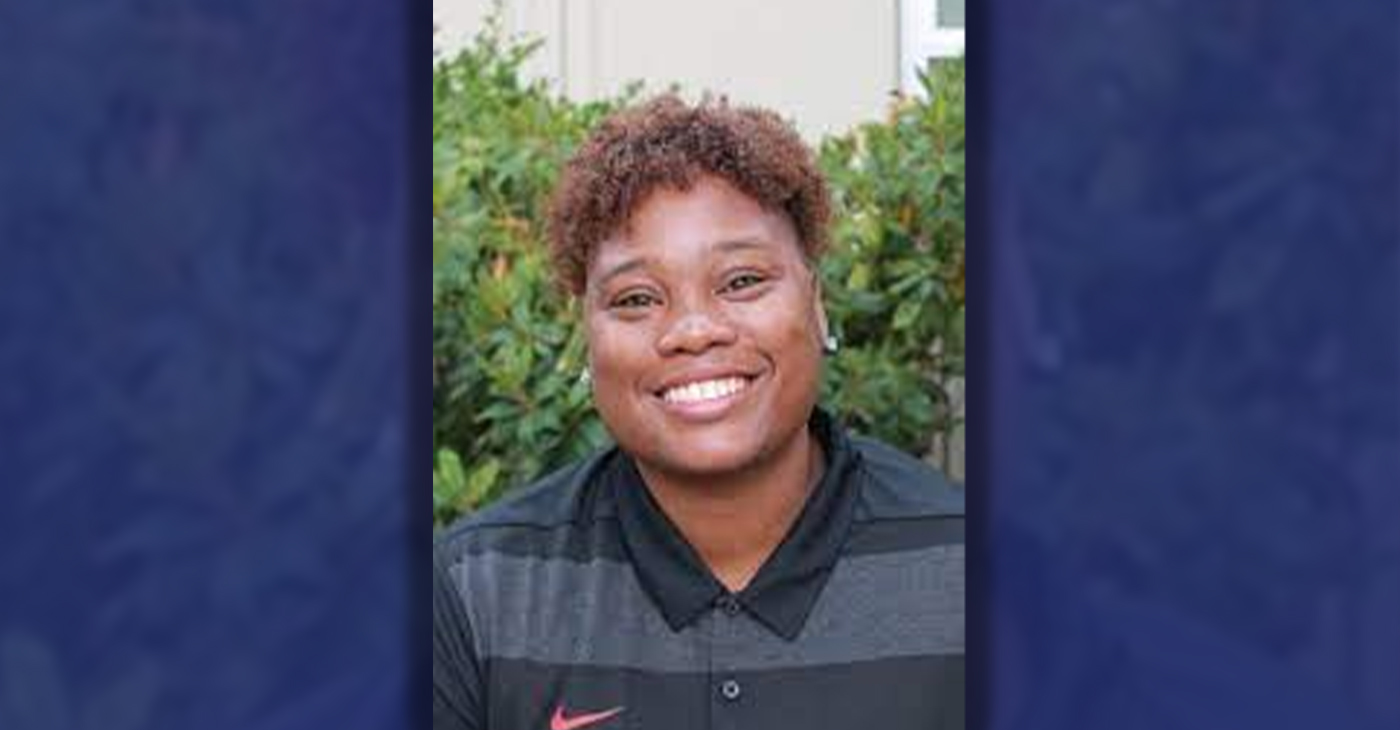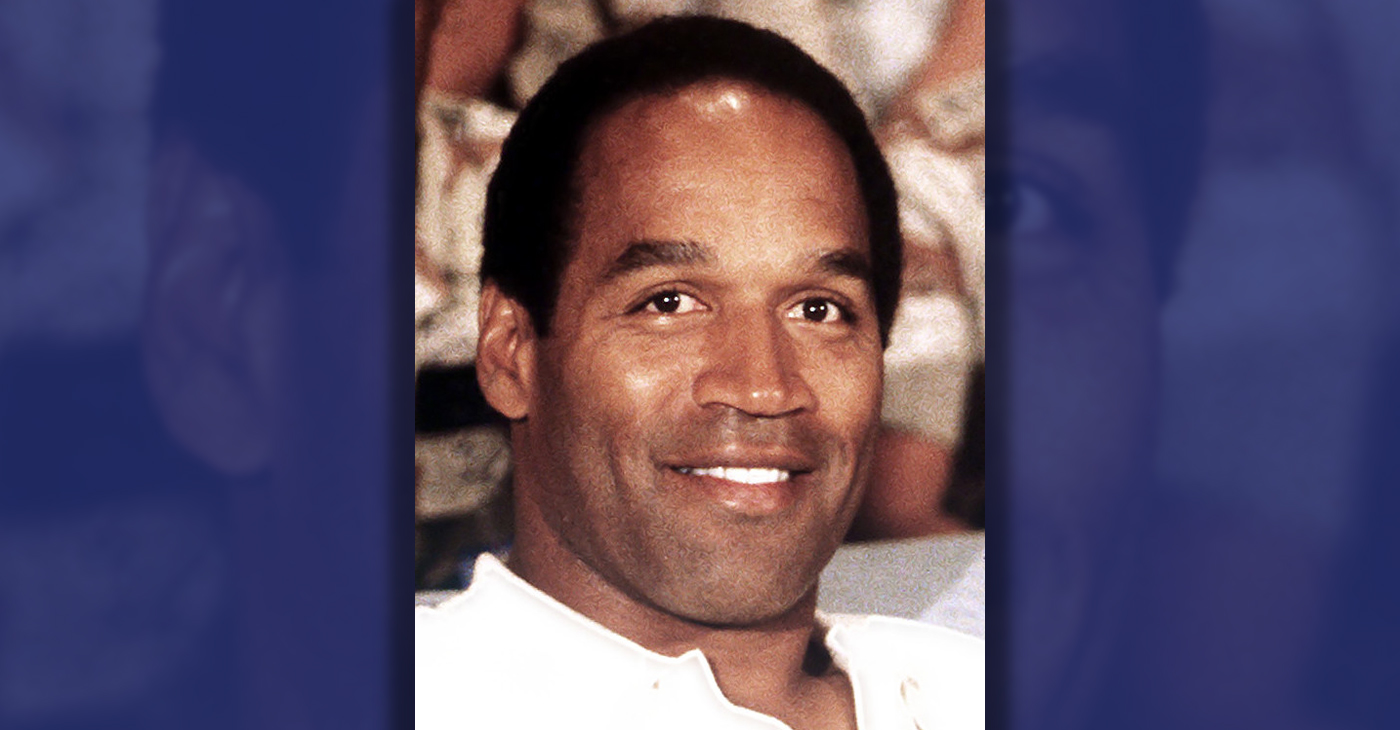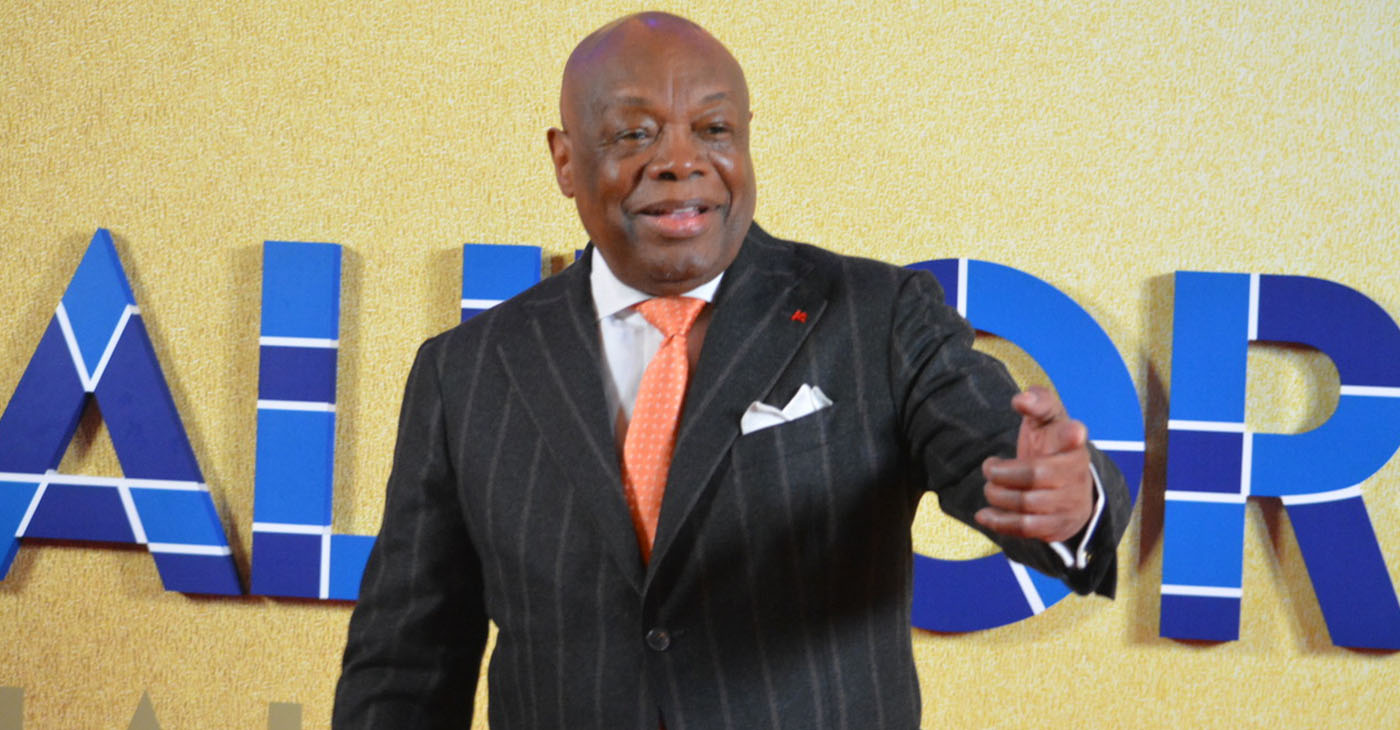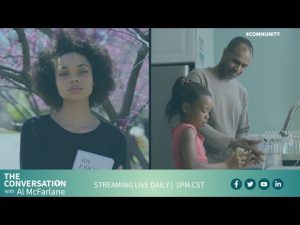Sports
Science Shows March Madness Fans Cannot Resist an Underdog

In this Friday, March 16, 2012 file photo, Lehigh’s Gabe Knutson (42), B.J. Bailey (32), Jordan Hamilton (44), Holden Greiner (20), John Adams (4) and Justin Maneri (31) celebrate after winning an NCAA tournament second-round college basketball game against Duke in Greensboro, N.C. Lehigh won 75-70. (AP Photo/Chuck Burton, File)
EDDIE PELLS, AP National Writer
If you got that warm-‘n-fuzzy feeling the weekend Lehigh beat Duke or the year N.C. State socked Phi Slama Jama or the time Butler almost did it, you are not alone.
The science shows, again and again, that we can’t resist pulling for the teams called the Anteaters (that’s UC Irvine). Or for the UABs of the world to upend the UCLAs. For the time-tested crowd pleaser, the No. 12 seed, and for anyone else with the label ‘underdog’ when March Madness rolls around.
About a dozen studies over the past 25 years have shown, in one way or another, that we, as sports fans, are inexorably drawn to the team with the odds stacked against it.
“It’s the prominent narrative in sports,” said Nadav Goldschmied of University of San Diego, who collaborated on one of the studies.
This penchant runs counter to almost everything else we’re wired to think. Scientific studies show people want to be associated with success and that our self-esteem grows when we’re part of the “in” crowd. Walk one well-dressed job candidate through the door, then follow him up with a schlub, and the studies show the majority of us favor the person who appears more attractive, almost regardless of their credentials.
But take that same dynamic into a sporting contest, where it’s a scraggly No. 14 seed against a polished No. 3, and the perceptions change.
One of Goldschmied’s studies had people watch a basketball game between two relatively unknown European teams after reading different write-ups about the rivalry. One group was led to believe Team A had won the last 15 meetings; the other was led to believe Team B had won all those games. Who they rooted for tilted based on who they considered the underdog.
Furthermore, in both cases, the team perceived as the underdog was viewed as the team giving more effort with less ability.
“That’s just the story we tell ourselves,” Goldschmied said. “We don’t have to look too deep to figure it out.”
One minor detail: It’s not always true.
Another study conducted by an Ohio State professor showed that groups that felt they had more to lose actually tried harder, which basically tears apart the whole theory that the Lafayettes, Eastern Washingtons and Belmonts of the world will be laying more on the line this week than Kentucky, Kansas and Wisconsin.
In this study, college students were asked to perform a simple task, and were told a group of students from another specific college was doing the same work.
In the studies where one of the competing schools was listed appreciably higher in the U.S. News and World Report college rankings, the students from that school completed about 30 percent more of the task — in short, they worked harder — than when they were competing against a college ranked better or equal to theirs.
Conclusion: “The motivation gains were there when students felt their group’s superior status was threatened,” said the study’s co-author, Robert Lount of Ohio State’s Fisher College of Business.
“We came at it from a completely different angle, which was, we know we like to avoid losing more than we appreciate the joy of winning,” Lount said. “If you think of your own team as favored, the team may work especially hard to make sure it comes out on top.”
For all our love of underdogs, there are a few exceptions.
If a person has a specific rooting interest in a team — say the college they graduated from — they tend to favor that team, even if the team isn’t the underdog.
It helps explain a study that found when big-conference teams are seeded better in games against mid-majors in the tournament, the Vegas point spread for the big-conference teams is inflated by an average of about two points a game.
“You look at the power conferences, and you see their following is much stronger than those of the smaller schools,” said the study’s co-author, Jim Lackritz, a statistics expert at San Diego State. “People put their money where their hearts are and that drives the line up.”
All of which could serve as good advice for people picking against point spreads over the next few weeks.
The majority of us, though, will fill out brackets — no point spreads involved — based on feel and feeling. Many will pay scant attention to the fact that double-digit seeds have won a mere 41 of 172 games during the opening week — less than 24 percent — over the past five years.
Seems like more, doesn’t it?
Well, we’re wired to remember it that way.
Quick quiz: Who won the fight at the end of the first “Rocky” movie?
Answer: Apollo Creed.
But in a study Goldschmied is currently conducting, he said a majority of those asked answered “Rocky.”
“We will bend our memory,” Goldschmied said. “We have forced our memory to change just to fit the underdog story. It’s because of the underdog mode in all of us.”
___
Follow Eddie Pells on Twitter at http://www.twitter.com/epells
Copyright 2015 The Associated Press. All rights reserved. This material may not be published, broadcast, rewritten or redistributed.
Community
Oakland WNBA Player to be Inducted Into Hall of Fame
The Multi-Ethnic Sports Hall of Fame (MESHOF) announced that it will induct Dr. Alexis Gray-Lawson, a former WNBA player and Oakland Technical High School graduate at its inaugural Curt Flood Platinum Award Ceremony in February. Gray-Lawson’s Platinum Award is part of the Hall of Fame’s 24th Annual Bay Area induction and award ceremony, where four other retired professional athletes will be honored.

By Post staff
The Multi-Ethnic Sports Hall of Fame (MESHOF) announced that it will induct Dr. Alexis Gray-Lawson, a former WNBA player and Oakland Technical High School graduate at its inaugural Curt Flood Platinum Award Ceremony in February.
Gray-Lawson’s Platinum Award is part of the Hall of Fame’s 24th Annual Bay Area induction and award ceremony, where four other retired professional athletes will be honored.
The banquet and ceremony will be held from 5:45 to 10 p.m. on Saturday, Feb. 24, at the George P. Scotlan Convention Center at Oakland’s Marriott Civic Center Hotel.
“I am truly honored to receive this incredible nomination,” said Dr. Alexis Gray-Lawson, who, along with college teammate Devanei Hampton, lead Oakland Tech to its second consecutive state title in 2005. “It took a village to raise me and get me here, and I truly am excited to continue the legacy.”
Gray-Lawson, a “second team” Parade All-American and an All-State honoree, as a senior in ’05, was chosen for the California Interscholastic Federation sportsmanship award. She only lost one game throughout her four-year career in high school. Her jersey was retired at Oakland Tech and placed in the National High School Hall of Fame as a four-time All-City recipient, averaging 17.2 points per game during her career.
Gray-Lawson received scholarships in volleyball, softball, and basketball before deciding to travel up College Avenue to the University of California, Berkeley. There, she played in more basketball games (143) than any other player in Golden Bears’ history. She finished her career as the Bears all-time 3-point leader (211), and she is ranked third in scoring with 1,982 points.
An All-Pac 10 and honorable mention All-American in 2010, Gray-Lawson also was the top player at 5’8” or under for the Frances Pomeroy Naismith Award. Later that year, she was a third-round pick of the Washington Mystics in 2010 and played with the Phoenix Mercury of the Women’s National Basketball Association in 2011 and 2012. She also played professionally overseas in Turkey and Israel.
Other inductees are Clifford Ray (Basketball); Lee Lacy (Baseball); Spencer Haywood (Basketball); and Mohinder Singh Gil (Track & Field).
Organizers say the event promises to be a “historic and celebratory evening,” and iconic personalities from across the professional sports industry and its various disciplines will attend.
The no-host cocktail hour begins at 5:45 p.m.; dinner at 6:45 p.m.; and the ceremony at 7:45 p.m. All times are prompt. General tickets are $250.00; Seniors (65 and older) $150.00, and students $50. This includes dinner and the ceremony. Tables of 10 are available as well, and early purchase is recommended.
MESHOF is a 501(c) (3) nonprofit organization dedicated to honoring athletes from all corners of the globe who have made significant contributions to the world of sports and broadening the public’s understanding of the contributions people of color have made to professional sports; and to provide educational life skills and mentorship opportunities for deserving youth. Proceeds will help maintain the City of Oakland’s Curt Flood Field, Oakland Parks & Recreation, and MESHOF’s after school and mental health initiatives.
Tickets can be purchased online at www.multiethnicsportshof.com. For additional information, please contact: Arif Khatlib @ afrosportshall@aol.com or India Alston @ india@beamcreativehouse.com
Entertainment
O.J. Simpson, 76, Dies of Prostate Cancer
Orenthal James (O.J.) Simpson, who rose to fame as a college football player who went on to the NFL and parlayed his talents in acting and sportscasting, succumbed to prostate cancer on April 10, his family announced.

By Post Staff
Orenthal James (O.J.) Simpson, who rose to fame as a college football player who went on to the NFL and parlayed his talents in acting and sportscasting, succumbed to prostate cancer on April 10, his family announced.
Born and raised in San Francisco, the Galileo High School graduate was recruited by the University of Southern California after he was on a winning Junior College All-American team.
At USC, he gained wide acclaim as a running back leading to him becoming the No. 1 pick in the AFL-NFL draft in 1969 and joining the Buffalo Bills, where he had demanded – and received — the largest contract in professional sports history: $650,000 over five years. In 1978, the Bills traded Simpson to his hometown team, the San Francisco 49ers, retiring from the game in 1979.
Simpson’s acting career had begun before his pro football career with small parts in 1960s TV (“Dragnet”) before “Roots” and film (“The Klansman,” “The Towering Inferno,” Capricorn One”).
He was also a commentator for “Monday Night Football,” and “The NFL on NBC,” and in the mid-1970s Simpson’s good looks and amiability made him, according to People magazine, “the first b\Black athlete to become a bona fide lovable media superstar.”
The Hertz rent-a-car commercials raised his recognition factor while raising Hertz’s profit by than 50%, making him critical to the company’s bottom line.
It could be said that even more than his success as a football star, the commercials of his running through airports endeared him to the Black community at a time when it was still unusual for a Black person to represent a national, mainstream company.
He remained on Hertz team into the 1990s while also getting income endorsing Pioneer Chicken, Honey Baked Ham and Calistoga water company products and running O.J. Simpson Enterprises, which owned hotels and restaurants.
He married childhood sweetheart Marguerite Whitley when he was 19 and became the father of three children. Before he divorced in 1979, he met waitress and beauty queen Nicole Brown, who he would marry in 1985. A stormy relationship before, during and after their marriage ended, it would lead to a highway car chase as police sought to arrest Simpson for the murder by stabbing of Brown and her friend Ron Goldman in 1994.
The pursuit, arrest, and trial of Simpson were among the most widely publicized events in American history, Wikipedia reported.
Characterized as the “Trial of the Century,” he was acquitted by a jury in 1995 but found liable in the amount of $33 million in a civil action filed by the victims’ families three years later.
Simpson would be ensnared in the criminal justice system 12 years later when he was arrested after forcing his way into a Las Vegas hotel room to recover sports memorabilia he believed belonged to him.
In 2008, he received a sentence of 33 years and was paroled nine years later in 2017.
When his death was announced, Simpson’s accomplishments and downfalls were acknowledged.
Sports analyst Christine Brennan said: “… Even if you didn’t love football, you knew O.J. because of his ability to transcend sports and of course become the businessman and the pitchman that he was.
“And then the trial, and the civil trial, the civil case he lost, and the fall from grace that was extraordinary and well-deserved, absolutely self-induced, and a man that would never be seen the same again,” she added.
“OJ Simpson played an important role in exposing the racial divisions in America,” attorney Alan Dershowitz, an adviser on Simpson’s legal “dream team” told the Associated Press by telephone. “His trial also exposed police corruption among some officials in the Los Angeles Police Department. He will leave a mixed legacy. Great athlete. Many people think he was guilty. Some think he was innocent.”
“Cookie and I are praying for O.J. Simpson’s children … and his grandchildren following his passing. I know this is a difficult time,” Magic Johnson said on X.
“I feel that the system failed Nicole Brown Simpson and failed battered women everywhere,” attorney Gloria Allred, who once represented Nicole’s family, told ABC News. “I don’t mourn for O.J. Simpson. I do mourn for Nicole Brown Simpson and her family, and they should be remembered.”
Simpson was diagnosed with prostate cancer about a year ago and was undergoing chemotherapy treatment, according to Pro Football Hall of Fame President Jim Porter. He died in his Las Vegas, Nevada, home with his family at his side.
He is survived by four children: Arnelle and Jason from his first marriage and Sydney and Justin from his second marriage. He was predeceased son, Aaren, who drowned in a family swimming pool in 1979.
Sources for this report include Wikipedia, ABC News, Associated Press, and X.
Arts and Culture
Gov. Newsom and First Partner Jennifer Siebel Newsom Host 2024 Hall of Fame Ceremony
Former Assembly Speaker and San Francisco Mayor Willie Brown and three other African Americans were among 10 luminaries inducted into the 2024 Class of the California Hall of Fame on Feb. 8. The 17th Annual California Hall of Fame ceremony was held at the California Museum.

By California Black Media
Former Assembly Speaker and San Francisco Mayor Willie Brown and three other African Americans were among 10 luminaries inducted into the 2024 Class of the California Hall of Fame on Feb. 8.
The 17th Annual California Hall of Fame ceremony was held at the California Museum.
“The California Hall of Fame is one of our families’ favorite traditions as it is a time to come together to celebrate remarkable Californians as well as their loved ones because we know that it is about partnerships,” Siebel Newsom said. “The governor likes to say that California is a dream factory because it doesn’t matter what zip code or background you come from, the California dream is alive and well to everyone who calls this state home.”
The other Black honorees were filmmaker Ava DuVernay; Federal Judge and civil rights leader, the Hon. Thelton Henderson; and basketball Hall of Fame player and broadcaster Cheryl Miller.
“It’s what I’ve been waiting for and to be among a great group of individuals that also deserve the honor,” Brown told California Black Media on the event’s red carpet before the ceremony began. “No, I never thought someone from Texas would be recognized this way. But here I am, and it all happened in the great state of California. It’s a fantastic feeling.”
Other 2024 inductees are: master chef and “mother of fusion cuisine” Helene An; computer scientist and “father of the internet” Vincent A. Cerf; all-female pop punk band The Go-Gos; Chicano Rock band Los Lobos; former U.S. Secretary of Defense and Congressman Leon E. Panetta; and artistic director and choreographer Brenda Way.
This year’s honorees join a history-making club with over 150 inspirational Californians previously inducted for their groundbreaking achievements and personifying the state’s innovative spirit.
“It’s just a humbling experience. I want to thank the Governor and First Partner. Who would have thought 100 years ago (that I would be inducted?) It’s incredible,” Miller said after her induction. “I want to thank the governor and First Partner for an incredible event.”
During his acceptance speech, Henderson said he was deeply honored.
“You know, it really would have been a really big deal to be inducted into the Hall of Fame in the area where I grew up, for example, South Central Hall of Fame, or the Watts Hall of Fame, or the Straight Out of Compton Hall of Fame,” he said. “But being inducted into the California Hall of Fame, Hall of Fame of the greatest state in the country in this great nation is something else.”
-

 Activism4 weeks ago
Activism4 weeks agoOakland Post: Week of March 27 – April 2, 2024
-

 #NNPA BlackPress4 weeks ago
#NNPA BlackPress4 weeks agoCOMMENTARY: D.C. Crime Bill Fails to Address Root Causes of Violence and Incarceration
-

 #NNPA BlackPress4 weeks ago
#NNPA BlackPress4 weeks agoFrom Raids to Revelations: The Dark Turn in Sean ‘Diddy’ Combs’ Saga
-

 #NNPA BlackPress4 weeks ago
#NNPA BlackPress4 weeks agoCOMMENTARY: Lady Day and The Lights!
-

 #NNPA BlackPress4 weeks ago
#NNPA BlackPress4 weeks agoMayor, City Council President React to May 31 Closing of Birmingham-Southern College
-

 #NNPA BlackPress4 weeks ago
#NNPA BlackPress4 weeks agoBaltimore Key Bridge Catastrophe: A City’s Heartbreak and a Nation’s Alarm
-

 #NNPA BlackPress4 weeks ago
#NNPA BlackPress4 weeks agoBaltimore’s Key Bridge Struck by Ship, Collapses into Water
-

 #NNPA BlackPress4 weeks ago
#NNPA BlackPress4 weeks agoBeloved Actor and Activist Louis Cameron Gossett Jr. Dies at 87









































